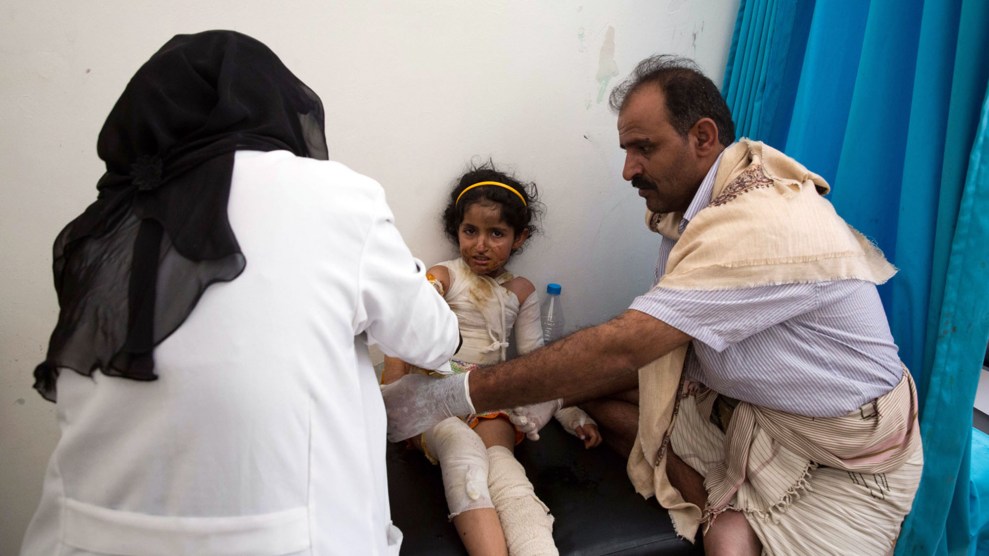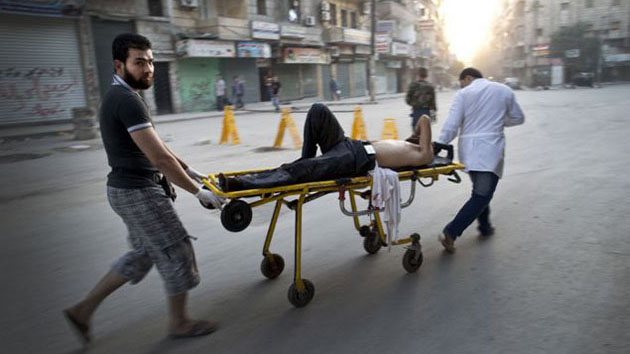
A man arrives at the hospital with gunshot wounds. Niclas Hammarström/Kontinent/zReportage
Fight disinformation:
Sign up for the free
Mother Jones Daily newsletter and follow the news that matters.
Just 400 meters from the front line in Aleppo, gunfire and mortar blasts echoed through the streets as the wounded and desperate were wheeled and carried to the Dar al-Shifa hospital in the ancient Syrian city. While located in the Free Syrian Army-held zone, a doctor said hospital workers tended to both FSA fighters and government soldiers, but that a full 80 percent of those treated were civilians, many of them children.
Formerly a private clinic owned by a local business man loyal to President Bashar al-Assad, the hospital was transformed into a field station where the desperately understaffed medical personnel tended to between 100 and 150 patients per week. With limited supplies and medical specialization, the volunteer doctors and nurses and even veterinarians worked to patch up the wounded and sent those who needed special attention, such as surgery, to the Assad-held part of the city to be treated at better-equipped hospitals.
Dar al-Shifa was a target for frequent bombings by government forces, but through the fighting the medical staff stayed put, continuing their work to help the grievously injured on hospital floors littered with debris and puddled with blood. Chief Doctor Osman al-Haj Osman, 30, told Vice that the reason Assad forces aim for the hospital is that “when you kill one doctor, it is better than killing 1,000 fighters.”
Since the fighting began on March 15, 2011, Syria’s conflict, initially inspired by the Arab Spring, has steadily turned into a civil war. As the conflict enters its 21st month, the death toll is climbing towards 40,000. The UN refugee office says 414,838 Syrians are in neighboring countries registered as refugees.
The rebels have managed to take hold of an area between Aleppo and the Turkish border, which they have dubbed “Free Syria.” Low on supplies and heavy weapons, and up against a regime thought to be receiving assistance from Russia, Iran, and even Hezbollah, the FSA rebels have endeavored to break a stalemate and are desperate for something that could tip the balance in their favor.
On November 21, Assad’s troops succeeded in leveling the Dar al-Shifa hospital with a missile strike, killing at least 15 people including four members of the volunteer medical staff. Photographer Niclas Hammarström was at the hospital in the month prior to its destruction, documenting the work of those who put their own lives on the line to save others in the heart of the death zone.
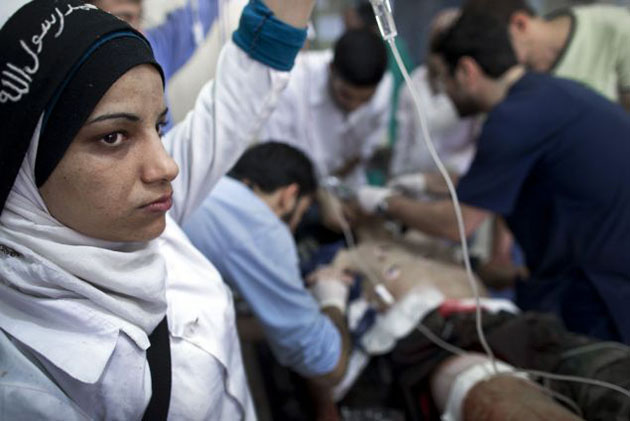
A 23-year-old government sniper is treated at an FSA controlled hospital. He is in critical condition after the bullet hit a nerve in his leg. Before he was injured, he shot and killed a woman and her child. Some of the personnel in the hospital want to see him dead. He will soon be transported in a taxi to another hospital in the Assad-held part of Aleppo.
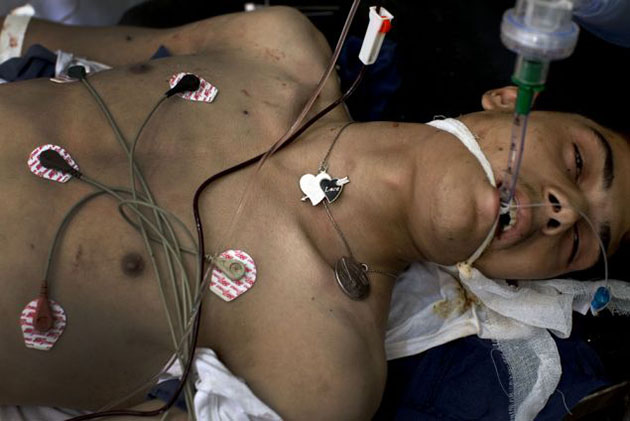
The government sniper treated at an FSA-held hospital prior to transport in a taxi to a government-controlled hospital.
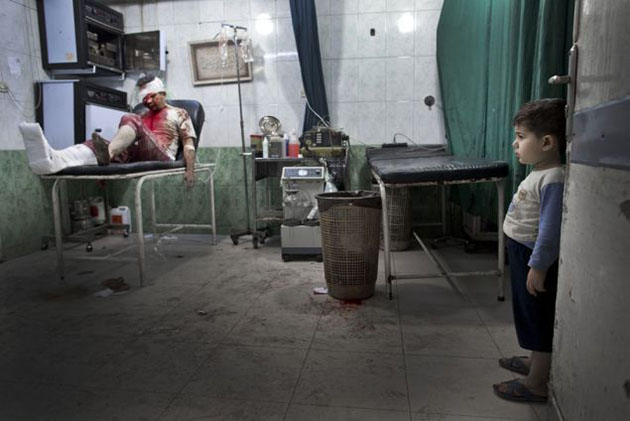
Because his wounds are so severe, staff at the Dar al-Shifa hospital plan on putting this man in a taxi to a government-controlled hospital, hoping that the driver can get through all the road blocks. His pregnant wife is also in serious condition after their home was hit by a bomb.
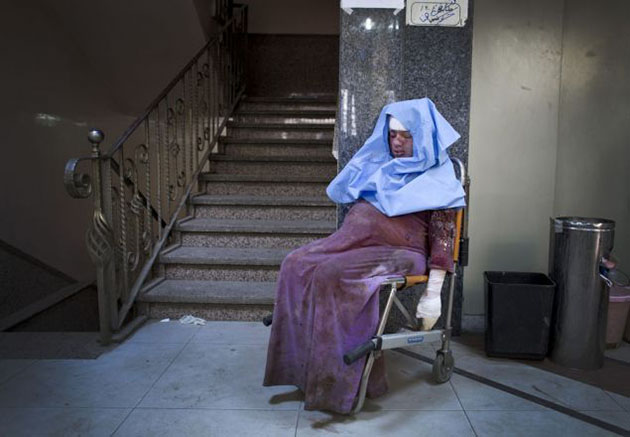
A severely wounded pregnant woman is propped up outside the Dar al-Shifa hospital as staff wait for the taxi to take her to a government-controlled hospital.
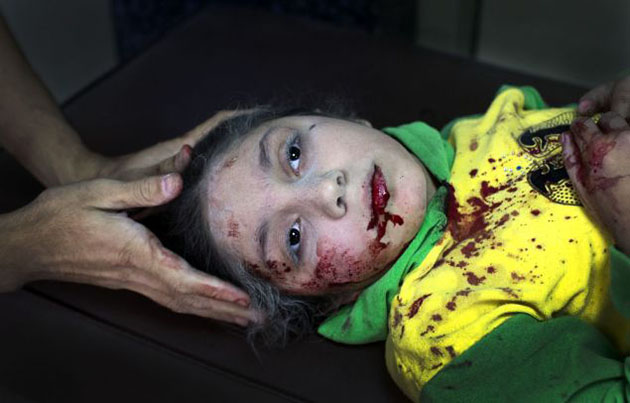
Dania Kilsi, 11, is treated for shrapnel wounds. She and her two younger siblings, Zaid, 2, and Fatima, 6, were playing outside their home when they were injured by a bomb.
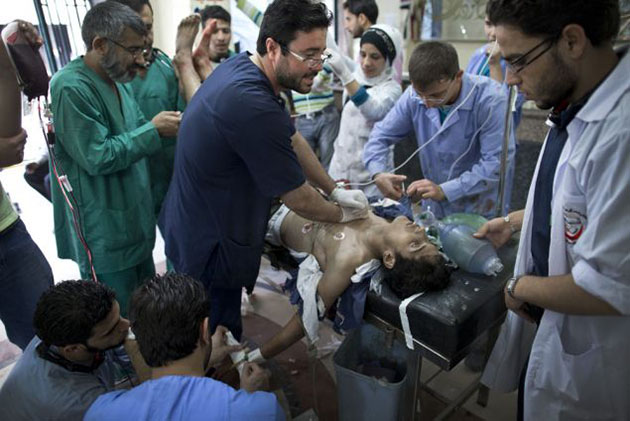
Doctors continue to work on the 23-year-old government sniper.
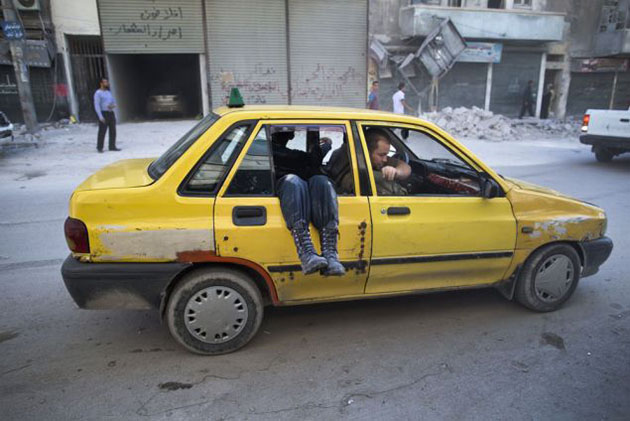
Omar, 31, an FSA soldier arrives at the Dar al-Shifa hospital with a gunshot wound to the chest.
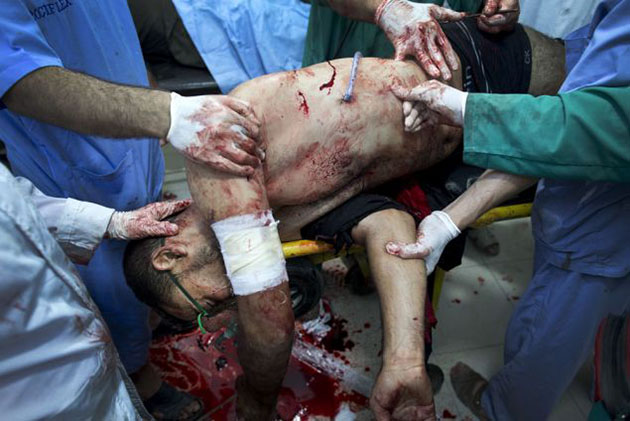
Nine minutes after an FSA soldier named Omar arrived at the hospital, he was declared dead.
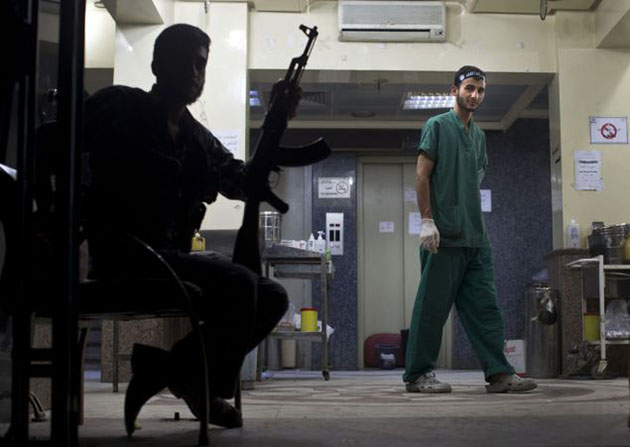
A gunman stationed at the Dar al-Shifa hospital.
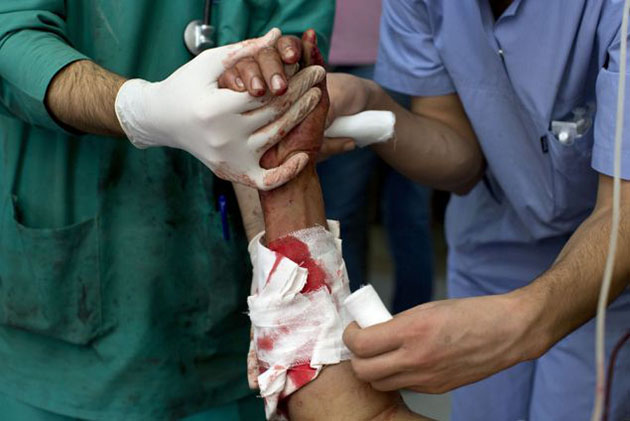
Doctors treat a man with shrapnel wounds to his arm.
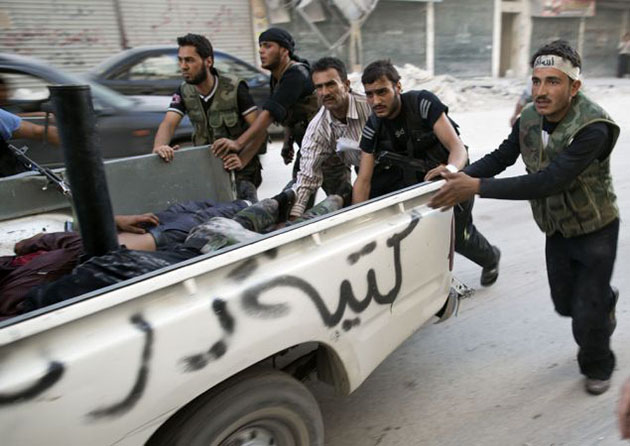
>Soldiers from the FSA push their truck after it ran out of gas. Two of their friends are in the pickup being transported to the Dar al-Shifa hospital. One is dead and the other one is gravely wounded.
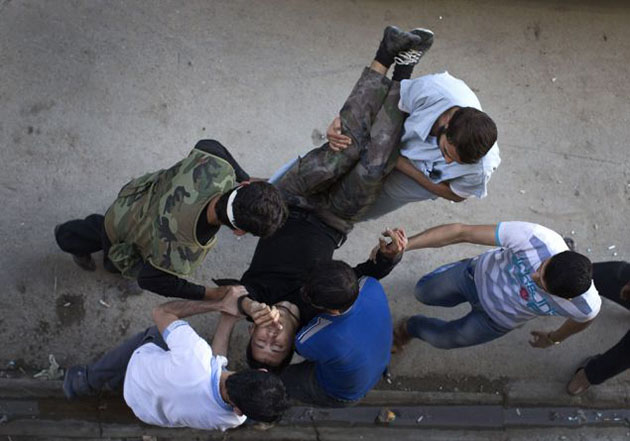
An FSA member is brought to the Dar al-Shifa hospital with gunshot wounds.
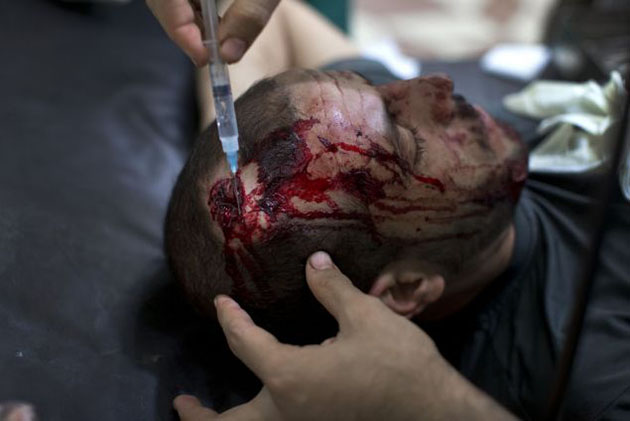
This man was lucky. He was shot in the head, but doctors were able to remove the bullet from his skull. After a couple of hours, he was sitting outside the Dar al-Shifa hospital with his brother: alive, but with a headache.
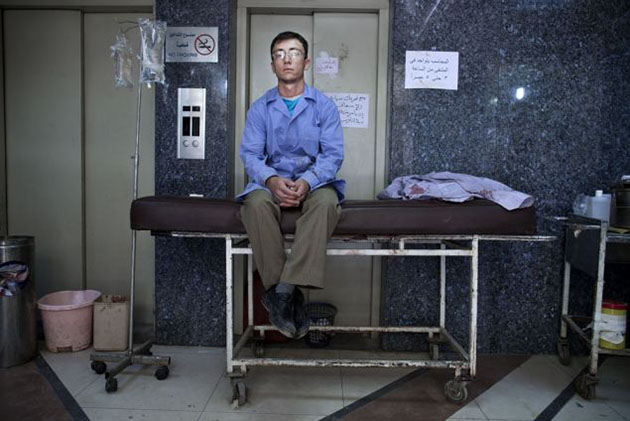
A staff member takes a rare moment to rest. Each day, the staff treats between 100 and 150 patients in a never-ending flood at the Dar al-Shifa hospital.
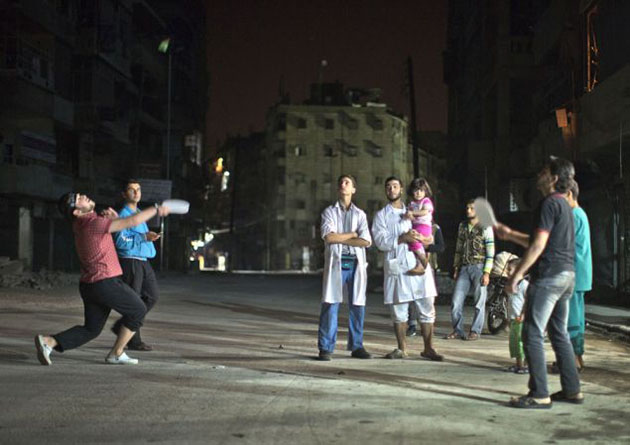
In an effort to relieve some of the tension at the hospital in the heart of a war zone, staff members play badminton outside the hospital in the middle of the night.
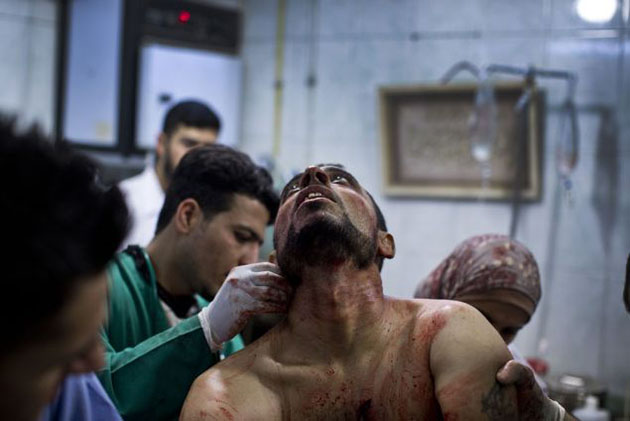
Hospital staff work on a critically injured FSA soldier. He later died of his injuries.
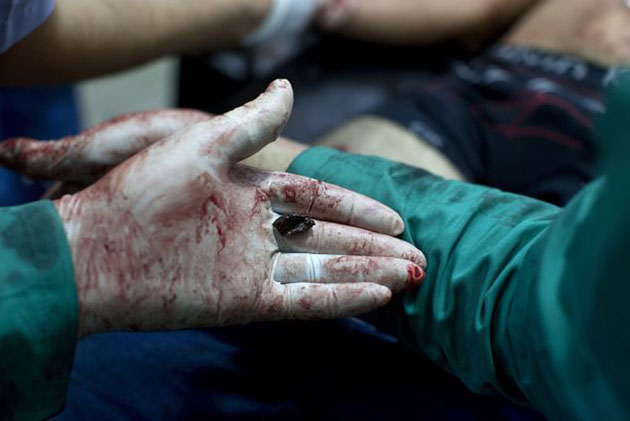
A piece of shrapnel removed from a soldier’s body.
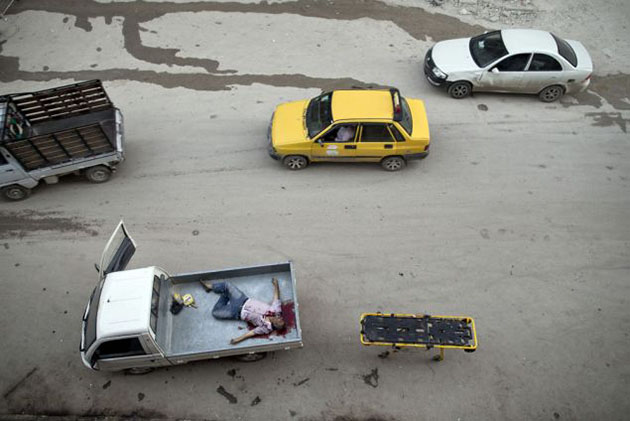
A dead civilian is loaded onto a pickup truck for transport back to his family.



















